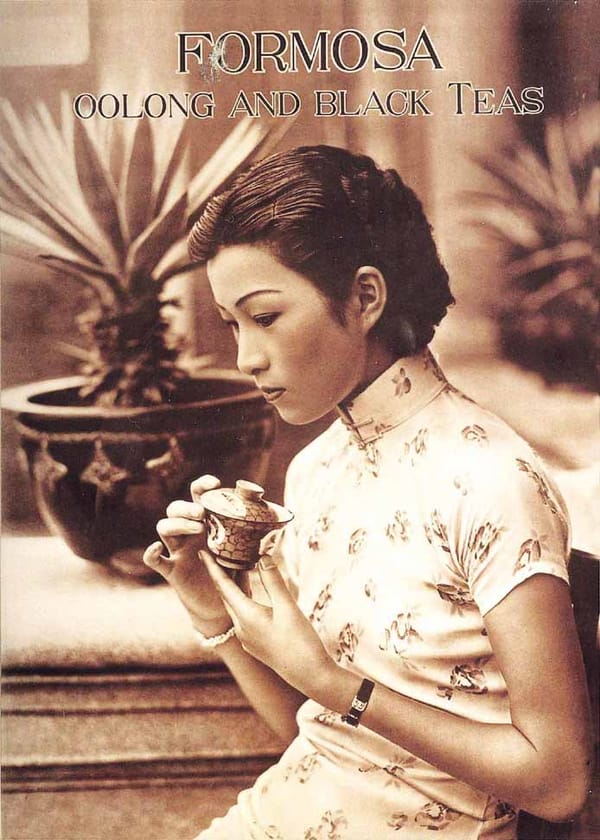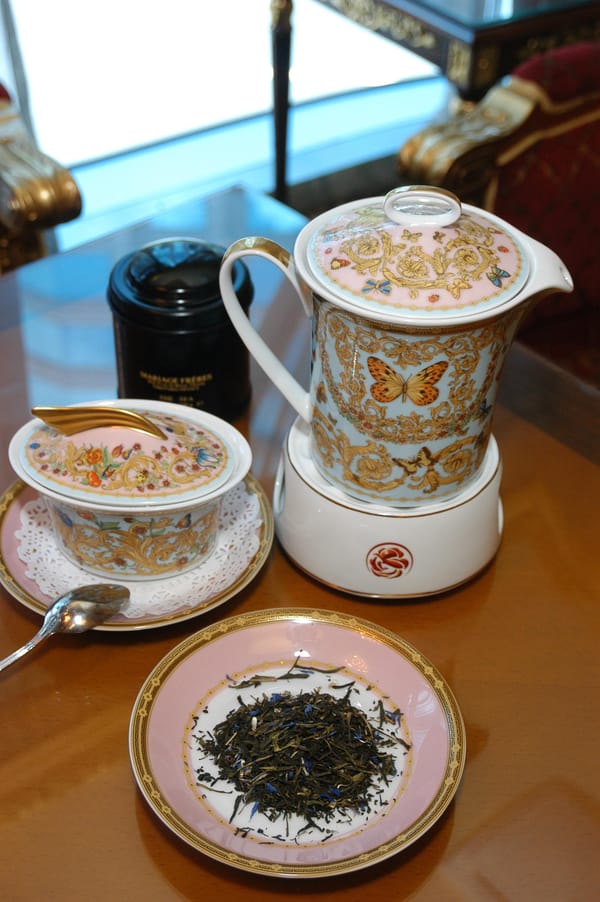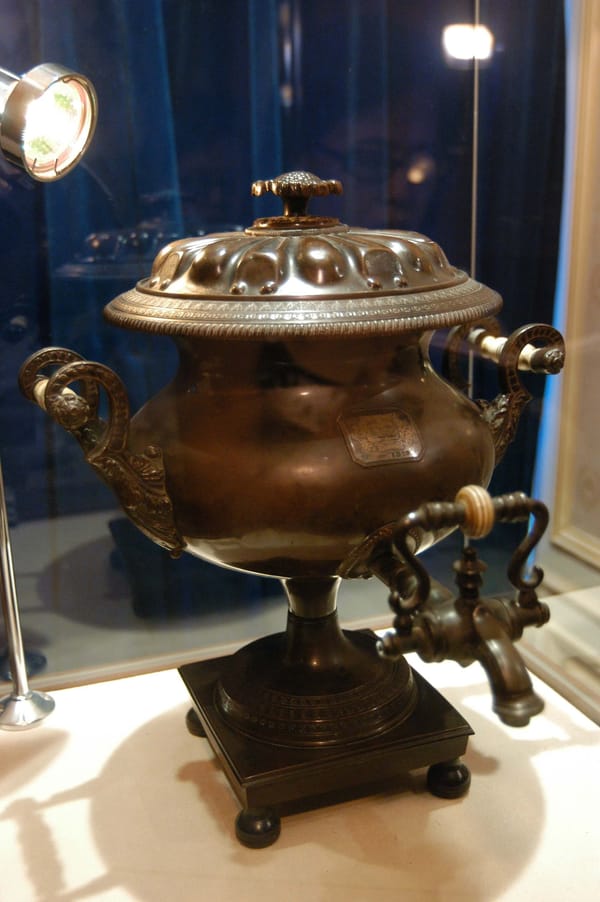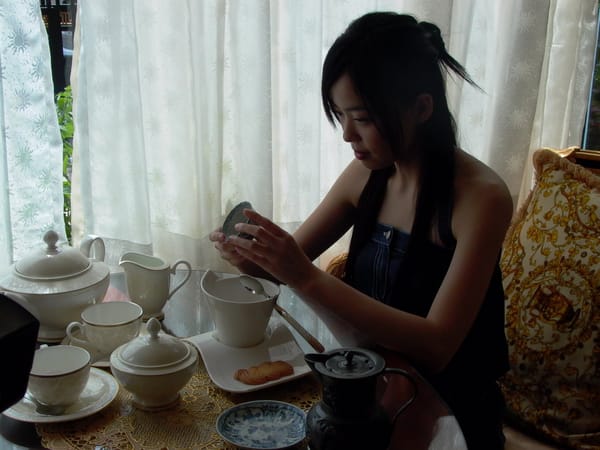Imagine sipping a steaming cup of red tea on a cold winter afternoon, feeling the warmth spread from your fingertips throughout your body. Tea has transcended its simple status as a beverage—it carries culture, history, and even the memories of an era.
In Taiwan, tea has an especially profound history. In 1896, as Japanese colonial rule began in Taiwan, the Mitsui Company quietly arrived on these shores, bringing not just a change in business models but a transformation of the entire tea culture.
How Mitsui Built a Tea Empire in Colonial Taiwan
Mitsui, a name that holds significant weight in Japanese business history, began as a small fabric shop in 1673. Over generations, it developed into one of Japan's most influential financial conglomerates. When they turned their attention to Taiwan, tea became their product of greatest interest.
Why tea? Because tea consistently maintained stable demand in international markets, particularly the seemingly endless British appetite for red tea (black tea). Mitsui recognized this opportunity and decided to cultivate and produce red tea on a large scale in Taiwan to meet global market demands.
Mitsui tea during the Japanese colonial period wasn't merely an economic venture—it profoundly reshaped Taiwan's red tea industry landscape. They introduced Japanese tea processing techniques, combining them with local growing conditions and traditions to create uniquely flavored Taiwanese red tea. This tea quickly gained acclaim in international markets, especially in Europe and America. Through Taiwanese red tea, Mitsui not only established trade networks but also injected modern management concepts into Taiwan's tea industry.
Tea, Technology, and Transformation: Mitsui's Cultural Impact on Taiwan
The rise of Mitsui tea changed not only Taiwan's economic structure but also deeply influenced its cultural landscape. Under Mitsui's promotion, Taiwanese tea production transitioned from small family workshops to large-scale industrialized production. This transformation brought new employment opportunities and introduced new technologies and knowledge.
In cities, Mitsui established specialized tea processing factories and warehouses that remain part of Taiwan's urban landscape today, standing as witnesses to the intertwining of history and modernity. In rural areas, the expansion of Mitsui's tea business didn't just alter the landscape but established the visual impression of modern "tea village culture" that can still be found today in Nantou, Taitung, and other regions—historical traces of the Japanese colonial period's tea industry.
Mitsui tea's success also encouraged more local Taiwanese entrepreneurs to enter the tea business, learning Japanese management models and techniques while incorporating local characteristics and innovations. This exchange and competition ultimately enriched the diversity and resilience of Taiwan's tea industry.
The Bitter-Sweet Truth: Colonialism and Taiwan's Red Tea
But behind this flourishing tea trade lies a story more layered and complex—a narrative of power, resistance, and cultural entanglement.
When discussing tea industry development during the colonial period, we cannot avoid its inherent complexities. On one hand, colonizers introduced new technologies and market channels, driving the modernization of the tea industry; on the other hand, this development was often unequal, with local farmers and workers frequently placed at a disadvantage.
Mitsui's tea operations in Taiwan reflected this complexity. They established a complete production and sales system—from tea gardens to factories to international markets—forming a vertically integrated industry chain. This model improved efficiency but also strengthened control over resources and labor.
In this process, local Taiwanese tea farmers and workers were both participants in this system and passive recipients. They learned new cultivation and processing techniques but simultaneously faced pressure and competition from foreign capital.
Post-War Transformation and Legacy
With the end of World War II and Japanese colonial rule, Mitsui's tea empire in Taiwan changed accordingly. However, the tea infrastructure, techniques, and market channels they left behind became important assets for Taiwan's post-war tea industry development.
Many Taiwanese tea experts who had worked for Mitsui used their acquired knowledge and experience to establish their own tea enterprises, continuing to develop Taiwanese specialty tea products. Today, Taiwan tea's reputation in international markets owes much to this historical accumulation and inheritance.
Tasting History: How Modern People Connect with the Past
As we step away from the colonial past and into the present, the legacy of Mitsui tea continues—not just in records or ruins, but in every sip.
Today, when we savor a cup of Taiwanese red tea, we are also tasting a piece of history. The tea plant varieties, processing techniques, and quality standards once introduced by Mitsui have, through the refinement of time, become part of Taiwan tea's DNA.
For modern consumers, understanding this history enriches not only the tea-drinking experience but also deepens comprehension of the cultural significance and social changes behind the tea. Every cup has its story, and Mitsui tea's story is a microcosm of Taiwan's modern history.
The Future of the Tea Industry: Balancing Tradition and Innovation
From Mitsui tea's history, we can see how tradition and innovation influence and merge with each other. This provides important insights for considering the future development of Taiwan's tea industry.
In today's globalized and digitized world, Taiwan's tea industry faces new opportunities and challenges. How can it maintain traditional craftsmanship and quality while adapting to consumers' ever-changing demands and tastes? How can modern technology and marketing strategies spread Taiwan tea's story further? These are questions worth contemplating.
Mitsui tea's history tells us that success often comes from respect for tradition and courage for innovation. In future development, Taiwan's tea industry needs to draw from this historical experience to find the balance between tradition and innovation.
Mitsui Tea's Historical Milestones in Taiwan
- 1896: Mitsui Trading enters Taiwan, begins planning tea operations
- Early 1900s: Establishes tea gardens and factories in Nantou, Chiayi, and other areas
- 1920s: Taiwanese red tea production technology matures, quality stabilizes
- 1930s: Taiwanese red tea enters Japanese and European markets, reputation grows
- 1945: After the war, Mitsui withdraws from Taiwan, tea industry transfers to local management
- 1950s-1960s: Taiwanese tea farmers inherit colonial-era tea techniques, independently develop the tea industry
- Present day: Mitsui tea's influence remains in Taiwan's tea culture development and tea-making techniques
A Cup of Tea, A Story of Connection
Tea is Taiwan's medium for dialogue with the world and a bridge connecting past and future. The rise and development of Mitsui tea in Taiwan is not just a story of business success but a microcosm of cultural exchange and social transformation.
The next time you taste a cup of Taiwanese red tea, take a moment to imagine the story behind it. Those farmers who once worked diligently in the tea gardens, those workers who carefully processed the tea in factories, and those merchants who brought Taiwanese tea to the world—their efforts and stories have all been infused into this fragrant cup of tea.
In this fast-paced era, Taiwanese red tea reminds us to slow down and appreciate life's details and beauty. Understanding the colonial history and cultural development behind the tea makes this experience even richer and more profound.
Let us together, through a cup of tea, connect with the past and look toward the future.
For more about tea tasting experiences and culture, visit Teatasting.net.





